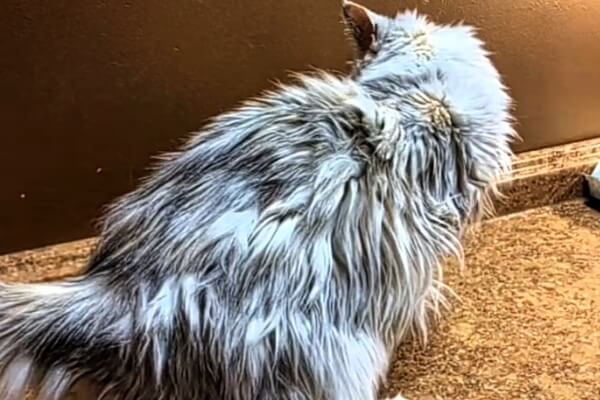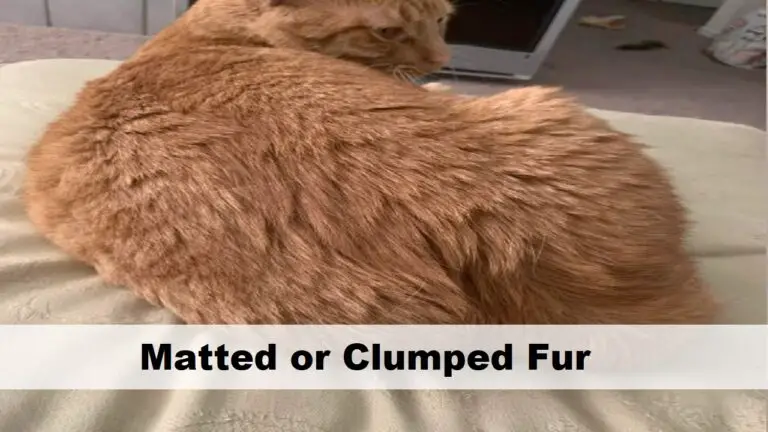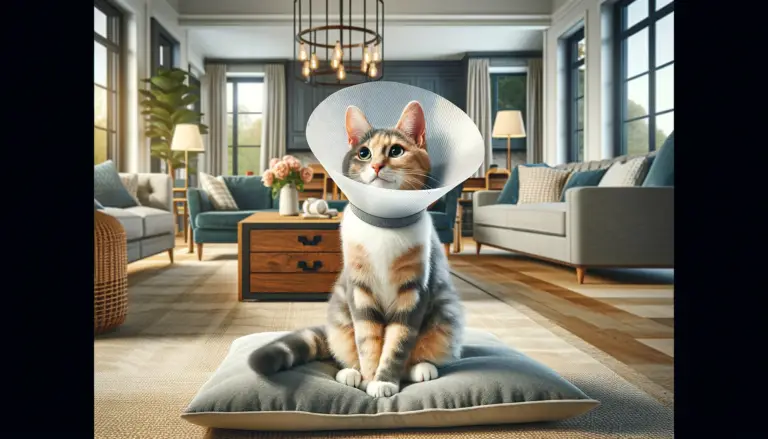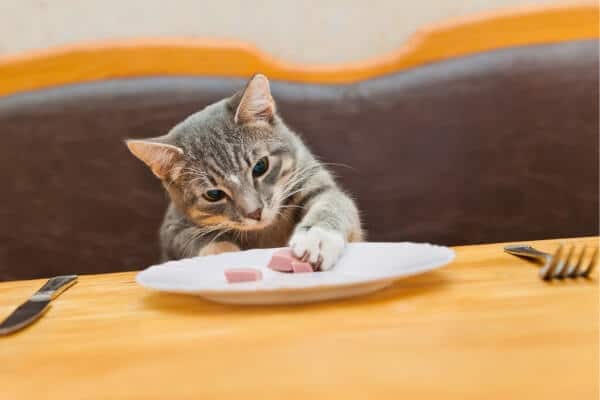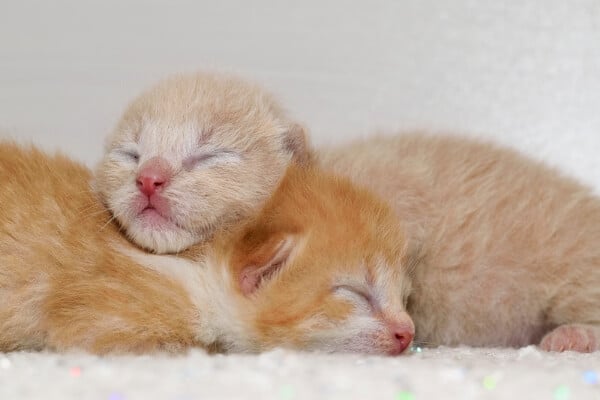Cat Died Giving Birth (10 Reasons & How To Feed Kittens)
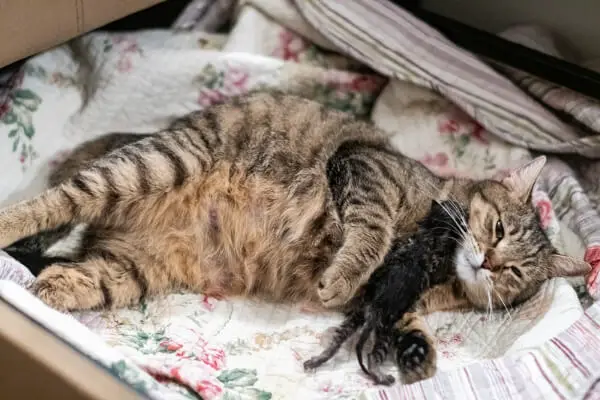
Losing a beloved feline companion is never easy, and it’s especially heart-wrenching when tragedy strikes during what should be a joyous occasion. However, the world of cats isn’t always filled with yarn balls and sunny windowsills. The death of a mother cat during childbirth is distressing, but educating yourself can help you understand the possible causes and prevent such cases in the future.
Momma cats die during or after birth mostly due to complications like obstructed labor, milk fever, uterine problems, retained placenta, or even mastitis. Also, if a cesarean section (C-section) was required for the delivery of the babies, excessive bleeding can occur after the surgery causing further complications. Infections and anemia may also be life-threatening for the dam.
Stepping into the role of a surrogate cat parent can be challenging. One of the most crucial tasks is learning how to feed the newborn kittens. They need specific care, starting from choosing the correct formula to mastering bottle feeding techniques. In this article, we’ll look into these topics, offering you a comprehensive guide on how to handle this difficult yet rewarding responsibility.
Why Did My Cat Die Giving Birth?
Losing a cat during or after giving birth can be a heartbreaking experience. There are several potential reasons why a cat may die during the birthing process or shortly after. Here are some of them.
1. Dystocia
Dystocia, or obstructed labor, can be a critical situation during feline childbirth. This complication arises when a kitten is either too large or malpositioned, making it impossible to pass through the birth canal. The severity of the situation is escalated by the physical stress endured by the mother cat. If the obstructed labor remains unresolved, it can lead to fatal consequences for both the mother and her unborn kittens.
The physiology of a cat is built for a smooth birthing process under normal circumstances. However, when a cat faces dystocia, the natural rhythm of childbirth is disrupted. The mother cat is forced to undergo a prolonged labor period, which results in extensive physical strain. Over time, this continuous strain can lead to uterine fatigue or even rupture, resulting in severe internal bleeding, shock, and potentially death.
2. Retained Placenta
The placenta is a key organ that forms during pregnancy to facilitate the transfer of nutrients from mother to kittens. Each kitten has an individual placenta that should be delivered following their birth. In some cases, however, a placenta may not be expelled and remains in the uterus, a situation known as retained placenta.
Retained placenta in cats can lead to severe, life-threatening conditions. Over time, the undelivered placenta starts to decompose within the uterus, resulting in the release of toxins and bacteria. The uterus, still rich with blood supply following childbirth, can become a site for these bacteria to multiply, leading to a severe infection.
3. Eclampsia
Eclampsia, commonly referred to as milk fever, is a condition seen in nursing cats. It is caused by a rapid drop in blood calcium levels. The condition is typically seen during the latter stages of pregnancy or while nursing, as the body uses its calcium reserves to produce milk for the kittens, which can lead to a severe imbalance.
This sudden drop in calcium levels has widespread effects on the body’s function. Calcium plays a pivotal role in muscle contraction, nerve function, and blood coagulation. With severely low calcium levels, the normal function of these systems becomes impaired. For instance, the decrease in available calcium can lead to dysfunction in the heart muscle, resulting in abnormal heart rhythms or even heart failure.
4. Uterine Torsion
Uterine torsion is when the uterus rotates around its axis, impeding the normal birthing process. The rotation can obstruct the birth canal, trapping the kittens inside the uterus.
These complications interfere with the natural flow of childbirth. The delay and obstruction of the birthing process can put extreme strain on the mother cat, potentially leading to physical exhaustion, dehydration, and metabolic imbalances. This can strain the cat’s organ systems, leading to organ failure in extreme cases.
5. Uterine Rupture
Uterine rupture is a life-threatening complication where the wall of the uterus tears during labor. It can occur as a result of extreme physical stress on the uterus, such as from dystocia, uterine torsion, or multiple pregnancies. This condition disrupts the normal birthing process, preventing kittens from being delivered and putting the mother cat’s life in immediate danger.
When a uterine rupture occurs, the contents of the uterus, including the kittens and placental material, can spill into the abdomen. This can cause severe internal bleeding and inflammation, which can lead to a sudden drop in blood pressure, shock, and even rapid death if not treated immediately.
6. Mastitis
Mastitis is an infection of the mammary glands that often occurs when a cat is nursing her kittens. Bacteria, commonly present on the skin or in the kitten’s mouth, can enter the milk ducts, leading to infection. This can cause the mammary glands to become inflamed and painful, impeding the mother’s ability to nurse her kittens.
The infection can lead to a localized collection of pus, or an abscess, in the mammary gland. If the abscess ruptures, bacteria can spread to the surrounding tissues and into the bloodstream. This can result in a systemic infection or sepsis, which can cause organ dysfunction and potentially death.
7. Excessive Bleeding After C-section
A cesarean section (C-section) is a surgical procedure used to deliver kittens when a cat cannot give birth naturally. Like any surgery, a C-section carries risks, including the risk of excessive bleeding. This can occur during or after the surgery and can lead to severe complications.
Excessive bleeding can cause a sudden drop in blood volume leading to decreased blood flow to vital organs. This can result in a condition called hypovolemic shock, which can cause organ damage and can be fatal if not treated quickly.
8. Infection And Parasites
Infections and parasites can significantly affect a cat’s overall health, making her more vulnerable during the birthing process. Bacterial, viral, or parasitic infections can weaken a cat’s immune system, reducing its ability to fight off disease. In the weakened state, the stress of childbirth can lead to an overwhelming infection or severe parasitic infestation.
Both infections and parasites can result in systemic illness in the mother cat. Severe infections can lead to sepsis, a systemic response to infection that can cause organ dysfunction and death. Similarly, parasites can cause significant damage to the cat’s internal organs, leading to organ failure and potentially death.
9. Anemia
Anemia, characterized by a decrease in the number of red blood cells, can be a significant issue for a pregnant or birthing cat. Red blood cells are responsible for carrying oxygen from the lungs to the rest of the body. A decrease in red blood cells can lead to inadequate oxygen delivery to the tissues, a condition known as hypoxia.
Chronic hypoxia can strain the heart as it works harder to deliver oxygen to the body’s tissues. Over time, this can lead to heart failure which can cause a buildup of fluid in the lungs and other tissues, leading to respiratory distress and potentially death.
10. Uterine Inertia
Uterine inertia is characterized by a loss of strength in the uterus to contract and push out the kittens during the birthing process. This condition can either be primary or secondary. Primary uterine inertia happens when the uterus fails to contract sufficiently from the onset of labor, preventing the delivery of the kittens. Secondary uterine inertia occurs when the uterus initially contracts normally, but the contractions gradually weaken and stop, typically due to exhaustion or if the birthing process is prolonged
The causes of uterine inertia are multifaceted and can include factors such as old age, poor health conditions, obesity, malnutrition, or large litter size.
Conduct Necropsy To Confirm The Cause Of Your Feline Death
Necropsy is the term for animal autopsy or post-mortem examination. This is a scientific procedure performed to determine the cause of death in animals. In the case of feline death, a necropsy can be conducted to investigate and confirm the underlying cause of the cat’s demise.
During a necropsy, a trained veterinarian or pathologist examines the deceased feline’s body through a systematic and detailed examination. The procedure involves several steps, such as:
1. External Examination
The veterinarian initially examines the external features of the cat’s body, looking for any visible signs of trauma, injury, or abnormalities. This involves inspecting the fur, skin, eyes, mouth, nose, and limbs for any signs of external injury or disease.
2. Internal Examination
After the external examination, the veterinarian proceeds to perform an internal examination. This involves making incisions in the body to access and examine the internal organs. The organs, such as the heart, lungs, liver, kidneys, gastrointestinal tract, and reproductive organs, are carefully examined for any abnormalities, lesions, tumors, or other signs of disease.
3. Sample Collection
During the necropsy, various samples are collected for further analysis. These samples may include tissues from different organs, blood, urine, cerebrospinal fluid, or other relevant biological fluids. These samples are crucial for conducting laboratory tests, such as histopathology (microscopic examination of tissues), toxicology analysis, microbiological cultures, or genetic testing.
4. Laboratory Analysis
Once the samples are collected, they are sent to a laboratory for analysis. Depending on the suspected cause of death, specific tests can be performed to identify infectious agents, toxins, genetic mutations, or other underlying conditions that may have contributed to the feline’s demise. Histopathology provides a microscopic examination of tissues to identify abnormalities or diseases at a cellular level.
The results obtained from the necropsy and laboratory analysis help in determining the cause of death accurately. This information is beneficial for veterinarians, researchers, and pet owners to understand the factors leading to the cat’s death, detect any potential diseases or genetic conditions, and guide future treatment and prevention strategies. It’s important to note that conducting a necropsy requires the consent of the cat’s owner or legal authority.
How To Feed Kittens Without A Mom?
Feeding kittens without a mother requires special care and attention, as they are unable to nurse and rely on their mother’s milk for nutrition. Here are some guidelines on how to feed kittens in the absence of a mother.
1. Consider The Age
Identifying the age of the kittens is your first step. Young kittens, especially newborns, have specific nutritional needs compared to older kittens. This information will guide you on the appropriate feeding strategy and the type of food they require. Newborn kittens have their eyes closed and are hairless, while one-week-old kittens will start to open their eyes. By three weeks, they have fully open eyes and are beginning to explore their environment.
2. Formula Selection
Once you’ve determined their age, you’ll need to choose the right food. Kittens require a special milk replacement formula that can be found at a pet store or a vet’s office. This formula is designed to mimic the nutrition found in a mother cat’s milk. Regular cow’s milk is not suitable, as it can upset their stomachs. Always choose a formula specifically designed for kittens to ensure they receive the necessary nutrients.
3. Feeding Equipment
Feeding kittens requires special tools like a small feeding bottle or a syringe without a needle. These tools should be kept clean to prevent infections. Always sterilize the feeding equipment before each use. If using a bottle, make sure the hole in the nipple is the right size; it should let out milk slowly when turned upside down.
4. Feeding Frequency
Newborn kittens need to eat frequently – around every two to three hours. As they get older, the interval between feedings can be extended. However, it’s important to stick to a consistent feeding schedule to ensure the kittens are getting the nutrients they need regularly. If they’re crying or not gaining weight, they may need more frequent feedings.
5. Feeding Technique
Always warm the formula to roughly body temperature before feeding. You can do this by placing the bottle or syringe in a bowl of warm water. Check the temperature on your wrist to make sure it’s not too hot. When feeding, hold the kitten in a natural, belly-down position, like the one they would be in when nursing from their mother. Don’t force-feed them; let them suckle at their own pace.
6. Feeding Amounts
The quantity of formula you should feed depends on the kitten’s age and size. Newborn kittens typically need around 2-3 milliliters per feeding. As they grow, they’ll require more formula at each feeding. If you’re unsure about the correct amount, consult a vet or refer to the instructions on the formula package.
7. Stimulating Elimination
After feeding, it’s essential to stimulate the kitten’s bowel movements. Using a warm, wet cloth or cotton ball, gently rub the kitten’s genital area. This action replicates the mother cat’s natural behavior and stimulates the kitten to urinate and defecate. If this step is neglected, kittens can become seriously ill.
8. Weaning Process
As the kittens grow older, you’ll need to gradually introduce them to solid food. Start with wet kitten food mixed with some formula, gradually increasing the amount of solid food while reducing the formula. This transition should be slow and gentle to avoid upsetting their stomachs.
9. Seek Guidance From Veterinary
Throughout this entire process, regular check-ups with a vet are crucial. A vet can guide you on feeding techniques, help you monitor the kittens’ growth, and address any potential health issues promptly. Remember, taking care of kittens without their mother is a significant responsibility, but with patience and care, it can be a rewarding experience.
Remember, feeding kittens without a mother requires dedication, patience, and regular monitoring of their health and development. Providing them with proper nutrition and care will give them the best chance of growing into healthy adult cats.
Can Cats Die From Giving Birth Too Many Times?
Cats do not die directly from giving birth too many times but it doesn’t necessarily mean pet owners should not practice responsible breeding as there are health issues that can arise from overbreeding. Responsible breeding as stated earlier includes allowing enough recovery time between litters and providing proper nutrition, to ensure the health of the mother cat.
When a cat continuously produces kittens, it takes a toll on her body. She uses a significant amount of energy for pregnancy and nursing, which, if not adequately replenished, can cause her to become weak and undernourished.
Additionally, every birth process carries certain risks. For instance, a cat may have difficulty delivering the kittens, or she might develop infections in her reproductive system. While these complications aren’t typical, the chances of them happening increase with each consecutive litter, particularly if the pregnancies are closely spaced. If severe and not treated promptly, these issues can become life-threatening.
Lastly, after giving birth, a cat needs time to recover. Overbreeding robs her of this crucial recovery period, causing a steady decline in her health over time.
If A Pregnant Cat Dies, Can The Baby Survive?
Yes, the unborn kittens of a deceased pregnant cat can survive, but it largely depends on the stage of pregnancy at which the mother cat passes away, the availability of immediate care, and the expertise of those providing the care.
If a pregnant cat dies, the immediate removal of the unborn kittens from the deceased cat’s body is crucial. If a caesarian section is performed quickly on the mother cat, the unborn kittens can be taken to a veterinarian or an experienced breeder who can provide the necessary care. Alternatively, if the kittens have not yet reached a viable stage, they may be placed in an incubator or fostered by a nursing mother cat.
However, it’s important to note that even with the best efforts, the survival rate for kittens removed from a deceased mother cat is generally low, particularly in the early stages of pregnancy. It is very crucial to consult with a veterinarian or an experienced breeder for guidance and assistance in such situations.
How To Reduce The Risk Of Pregnancy Complications In Cats?
Reducing the risk of pregnancy complications in cats involves taking certain precautions and providing appropriate care before, during, and after pregnancy. Here are some important factors to consider:
1. Pre-pregnancy Health
Before breeding your cat, it’s essential to ensure she is in good overall health. Schedule a visit to the veterinarian to conduct a thorough examination, including testing for infectious diseases such as feline leukemia virus (FeLV) and feline immunodeficiency virus (FIV). This helps minimize the risk of these diseases being transmitted to the kittens or causing complications during pregnancy.
2. Proper Nutrition
A balanced and nutritious diet is crucial for a pregnant cat. Consult your veterinarian to determine the appropriate food and feeding schedule for your cat during pregnancy. Providing high-quality, commercially available cat food specifically formulated for pregnant and nursing cats can help meet their increased nutritional requirements.
3. Regular Veterinary Check-Ups
Regular prenatal care is essential for monitoring the health of the pregnant cat and identifying any potential complications early on. The veterinarian can perform ultrasounds or X-rays to estimate the number of kittens, identify any abnormalities, and assess the overall health of the mother.
4. Environmental Considerations
Create a safe and comfortable environment for the pregnant cat. Provide a quiet and secluded area where she can give birth and care for her kittens. Ensure the space is clean, warm, and free from potential hazards. Minimize stressors and limit exposure to other animals during pregnancy to reduce the risk of infections.
5. Monitoring During Labor
Keep a close eye on the cat as she approaches her due date. Look for signs of labor, such as restlessness, nesting behavior, and a decrease in appetite. Provide a birthing box or nesting area with clean bedding where the cat can give birth comfortably. If you notice any prolonged delays in labor, excessive bleeding, or signs of distress, contact your veterinarian immediately.
It is crucial to consult with a veterinarian throughout the entire process of cat pregnancy to ensure you receive the most accurate and up-to-date guidance.
Final Thoughts
The loss of a cat during childbirth is a devastating occurrence that requires both emotional healing and practical action. It is essential to acknowledge the grief and sadness that comes with such a tragedy, allowing yourself time to process the loss. Reach out to friends, family, or support groups who can provide comfort during this difficult time. Remember, you are not alone in your experience.
While mourning, it is crucial to focus on the surviving kittens and their needs. Providing them with the necessary care and support becomes your priority. Seek guidance from professionals such as veterinarians or animal shelters who can offer advice on how to feed, stimulate, and ensure the kittens’ overall well-being. By addressing their immediate needs, you can play a significant role in their growth and survival.
Related Articles
Read related posts about

